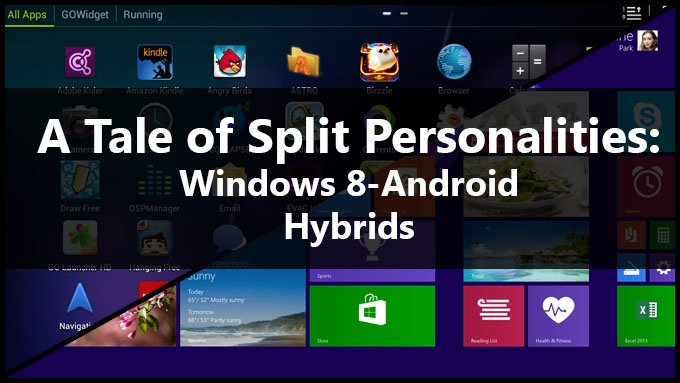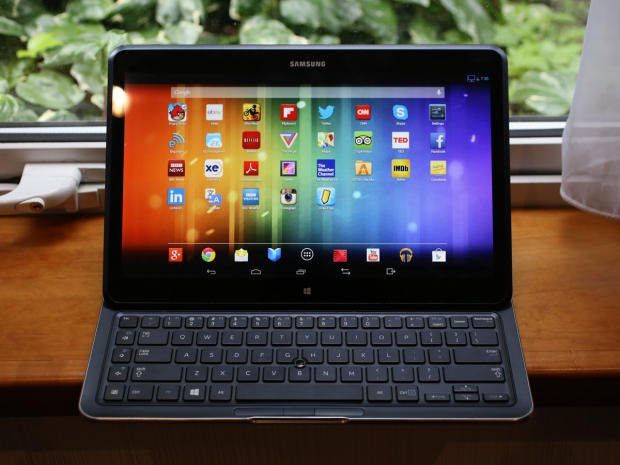A Tale of Split Personalities: Windows 8-Android Hybrids

Microsoft has spent a great deal of time designing Windows 8 from the ground up in terms of making it a great operating system for both tablet and traditional non-touch screen notebook style machines. There are a few companies, who do not believe that is enough. Whether it be that they feel Windows 8 is not efficient enough as a touch operating system or they simply believe it does not have enough of a robust application store, they have turned to what they believe could be a possible savior – Android.
Samsung announced one of the first “hybrid” style machines, the ATIV Q, at their premiere event in 2013. The 13 inch tablet was presented as a machine running Windows 8.1, but could also run the latest version of Android (at the time), Jellybean 4.2. The truth beyond that statement is that the machine did not actually run Android natively, but instead inside a virtual machine.
The Samsung ATIX Q sported great hardware with an Intel Haswell CPU and 3200 x 1800 resolution display with a pixels per inch rating of 275 (the current Apple Macbook Pro with Retina display ranks in with a pixels per inch rating of 227 for comparison). The unit also featured an include S Pen stylus for note taking.

At the time of announcement, Samsung presented it as a way to have a productive Windows operating system, but still access all of your favorite apps and games. As the Windows Store continued to grow, Samsung announced that the product has been “indefinitely delayed”. While an interesting approach, we felt this approach would be long gone by today, but it isn’t.
According to records from the Federal Communication Commission, ASUS has submitted three devices for testing – the M82T, L82T, and the R82T; all three devices are said to being running both Windows 8.1 and an undisclosed version of Android. ASUS lists these devices with the FCC as “Dual OS tablets”.
We can talk specifications, and we briefly will. The three ASUS machines seem to exist in 32 GB and 64 GB variants; both include a 3,910 mAh battery. Beyond those notes, ASUS has not released any other information, so you will just have to sit tight.
What would it mean for an OEM to bundle Windows 8 and Android side by side though? The answer is quite simple – a slower growth rate for the Windows Store. Microsoft wants the Windows Store to grow beyond what it currently is and with such a large majority of missing applications, they are pushing hard to get what they need.
Get the Windows Central Newsletter
All the latest news, reviews, and guides for Windows and Xbox diehards.
Installing Android side by side with Windows 8 could push people to simply access the Android side of the device, when an app is needed. It must be noted that dual booting Android and Windows 8 on devices, won’t kill the Windows Store, but it might slow progress as developers see less of a need to rush their apps onto the platform. Android, in a way, would act as a crutch for what Windows 8 could not provide – or does not provide as well.
Luckily, the Samsung ATIV Q will most likely become vaporware and ASUS’ tablets will become another failed attempt at merging the two distinctly different operating systems together and harming the Windows ecosystem.
What do you think – can dual booting Android and Windows 8 create danger in the application ecosystem?

